Walking around the Vatican: what lies behind the walls of a separate state in the centre of Rome
Categories: Culture | Design and Architecture | Europe | Exhibition
By Pictolic https://pictolic.com/article/walking-around-the-vatican-what-lies-behind-the-walls-of-a-separate-state-in-the-centre-of-rome.htmlA remarkable mixture of religion, art and culture, the Vatican is one of the most mysterious places in the world for centuries played an important role in the history of Europe.
The world's only Catholic country, the residence of the Pope hides behind its walls an amazing amount of historical artifacts and works of art such as Michelangelo on the Sistine chapel and various documents showing the court representatives of the Church over the greatest scientists of Europe.
Secret bridges to escape from the city, architectural structures, transported from other continents — we offer you to look at the Vatican from the inside.
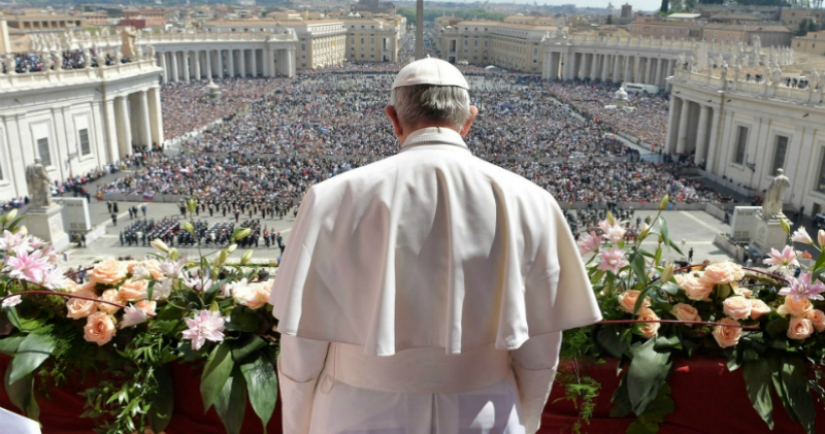
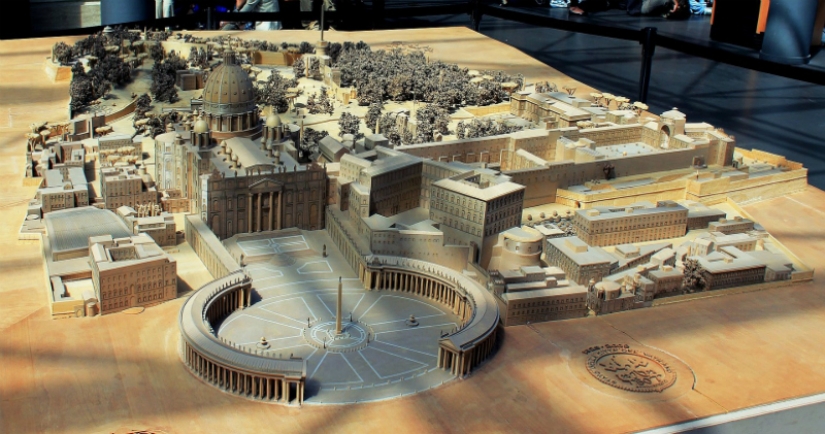 Architectural 3D model of the city
Architectural 3D model of the city
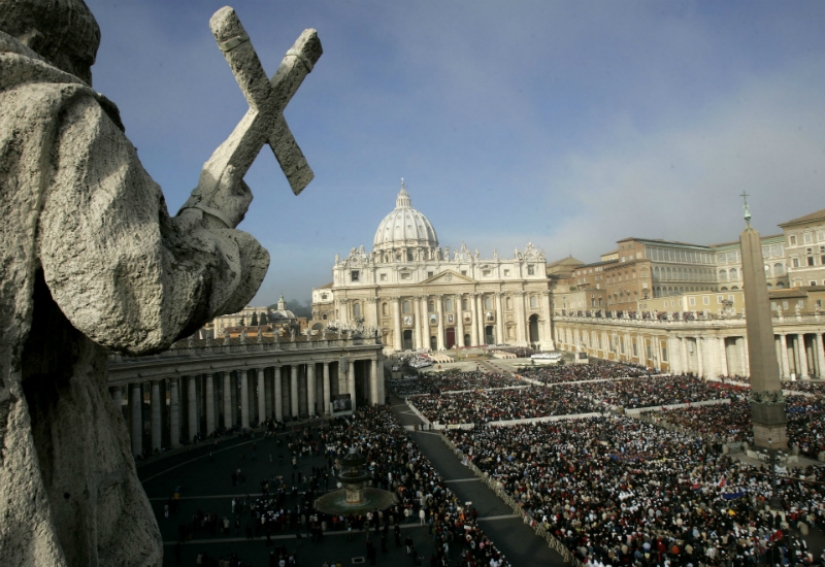 The first thing visitors see after passing through the Vatican wall, is a huge St. Peter's square. The edges of the square enclose the Roman column, and in the center stands, the 41-metre high obelisk, brought by the Emperor Caligula from Egypt.
The first thing visitors see after passing through the Vatican wall, is a huge St. Peter's square. The edges of the square enclose the Roman column, and in the center stands, the 41-metre high obelisk, brought by the Emperor Caligula from Egypt.
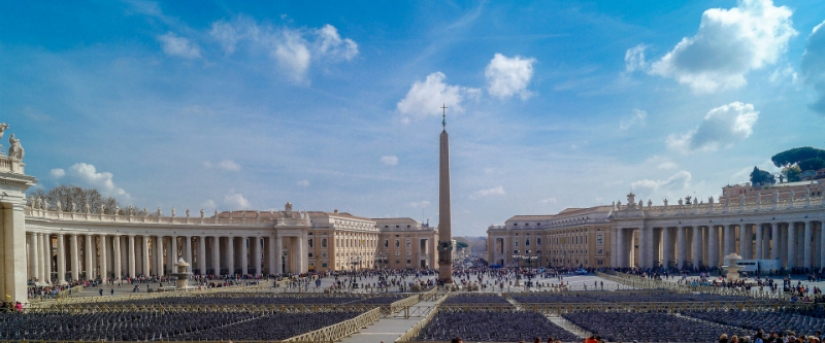
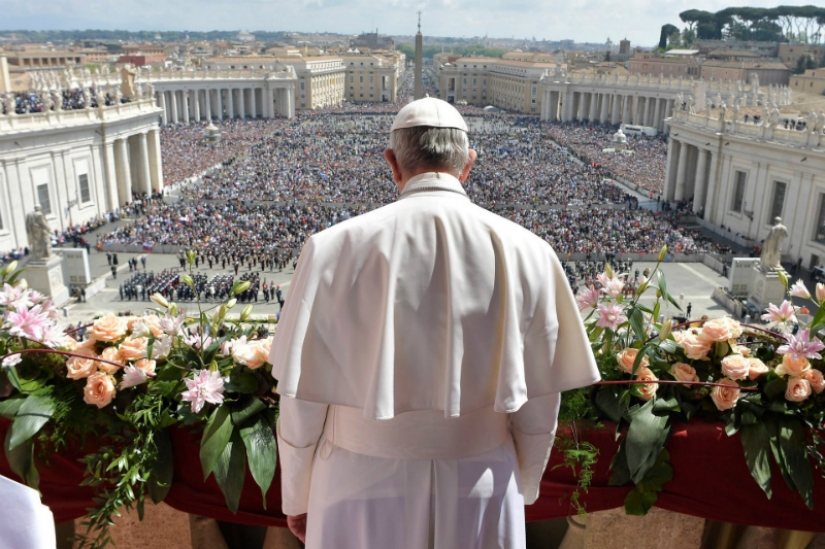 On the same square, the parishioners gathered to hear speeches and sermons of Pope from his balcony.
On the same square, the parishioners gathered to hear speeches and sermons of Pope from his balcony.
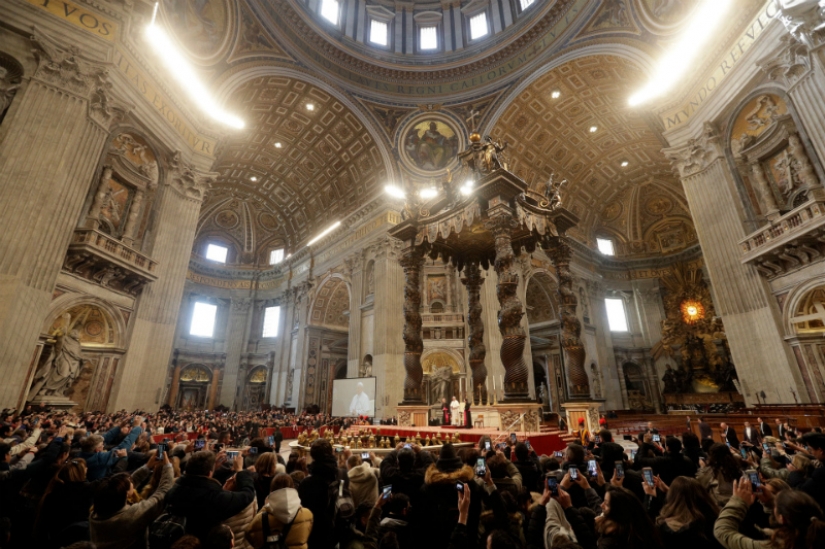 The Basilica was built on the hill where the Emperor Nero allegedly ordered to execute the one of Peter. This historical monument is the skill of painters and sculptors from different eras.
The Basilica was built on the hill where the Emperor Nero allegedly ordered to execute the one of Peter. This historical monument is the skill of painters and sculptors from different eras.
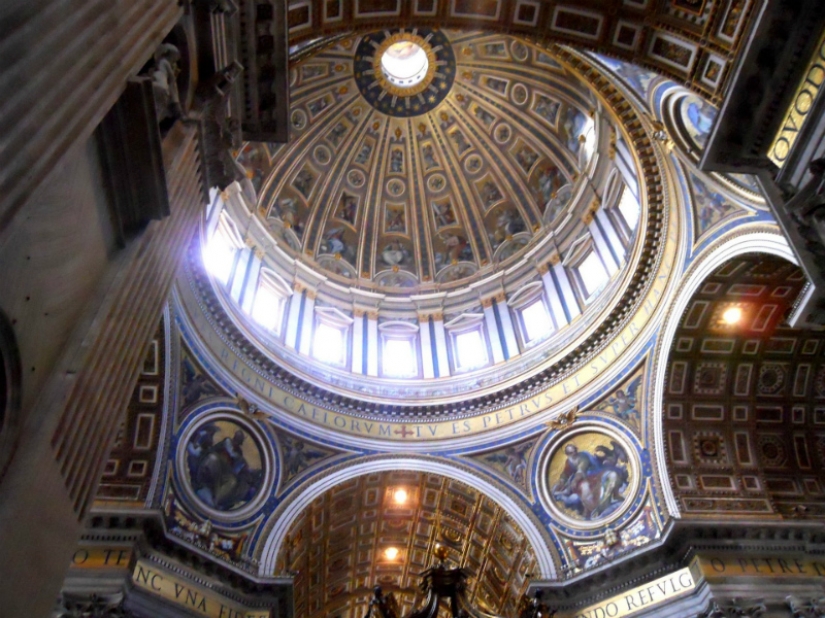 To crown the Basilica is famous for its massive dome, decorated by Michelangelo.
To crown the Basilica is famous for its massive dome, decorated by Michelangelo.
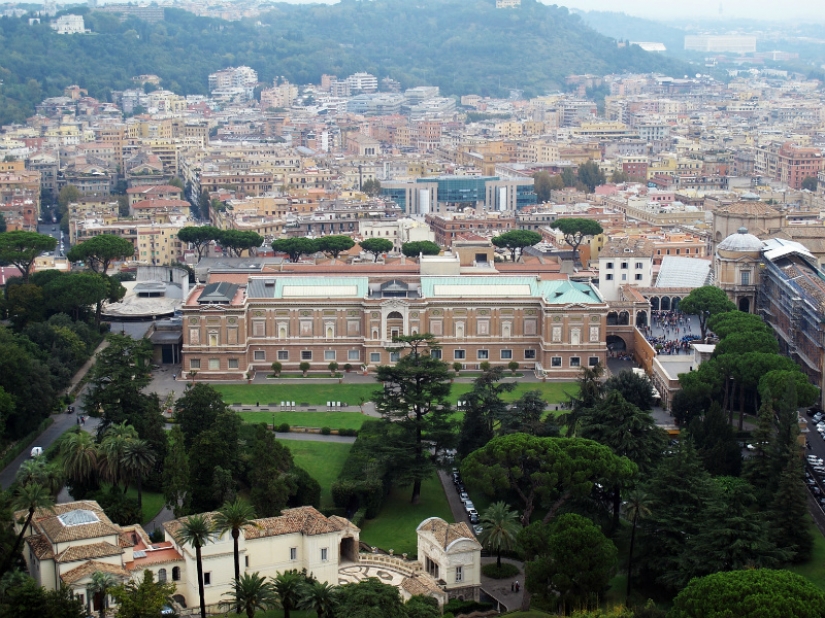 From the top of the dome where you can get, breaking 551 step — magnificent views of Rome and Vatican gardens, stretching from the back side of the Basilica.
From the top of the dome where you can get, breaking 551 step — magnificent views of Rome and Vatican gardens, stretching from the back side of the Basilica.
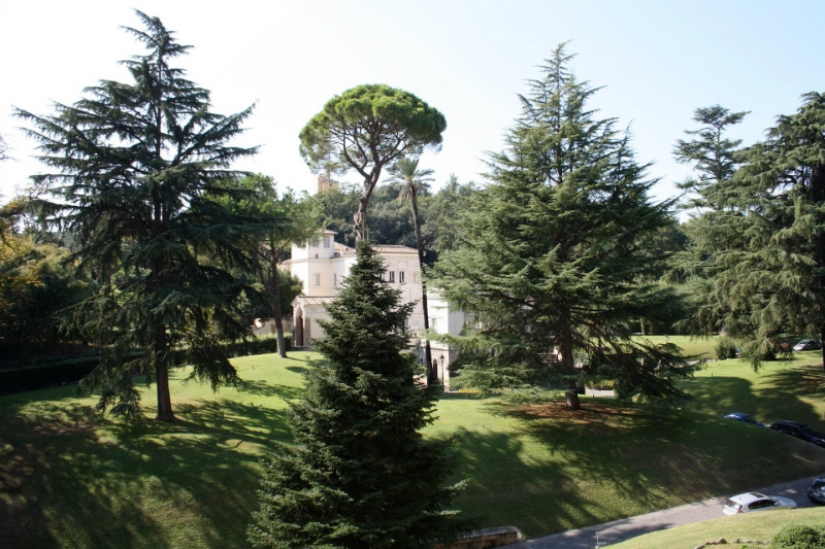 The gardens cover about 60 acres — more than half the entire area of the Vatican — and usually unavailable to visitors, as it was originally conceived as a personal recreation area for dad.
The gardens cover about 60 acres — more than half the entire area of the Vatican — and usually unavailable to visitors, as it was originally conceived as a personal recreation area for dad.
 Located amongst the gardens including government house and even a helipad the Pope.
Located amongst the gardens including government house and even a helipad the Pope.
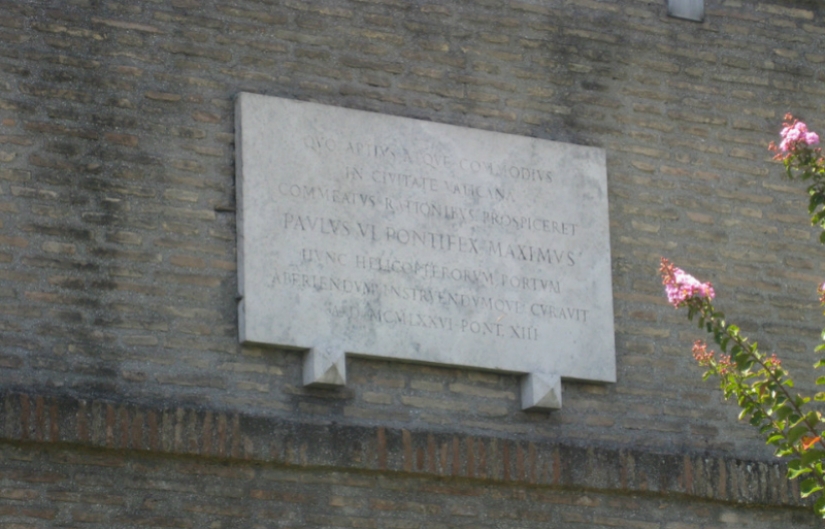 Near helipad traditional hanging plaque with the inscription in Latin: "the Pope was able to look over their holdings in the Vatican from the air. The Supreme Pontiff Paul VI".
Near helipad traditional hanging plaque with the inscription in Latin: "the Pope was able to look over their holdings in the Vatican from the air. The Supreme Pontiff Paul VI".
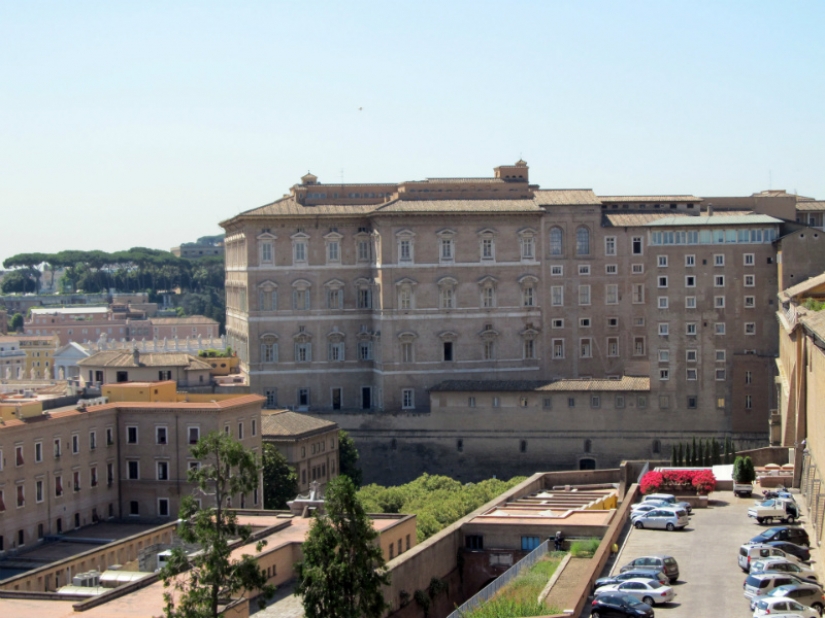 To the North of the Basilica, adhering to the gardens of the Vatican palaces — a chain of connected buildings, along with over a thousand rooms.
To the North of the Basilica, adhering to the gardens of the Vatican palaces — a chain of connected buildings, along with over a thousand rooms.
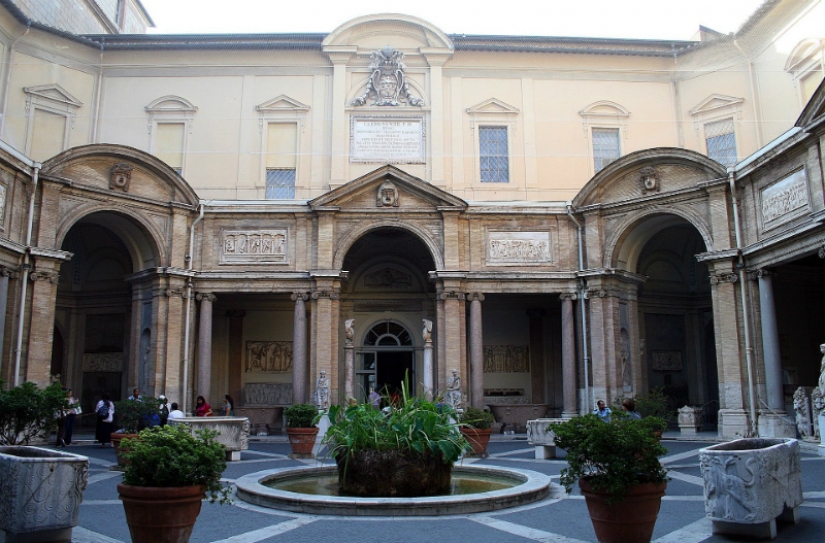 The palaces contain many chapels, government buildings and apartments. The complex of palaces traditionally serves as the home of the Pope since the fourteenth century.
The palaces contain many chapels, government buildings and apartments. The complex of palaces traditionally serves as the home of the Pope since the fourteenth century.
 A significant part of the complex of palaces today are reserved for the Vatican museums.
A significant part of the complex of palaces today are reserved for the Vatican museums. 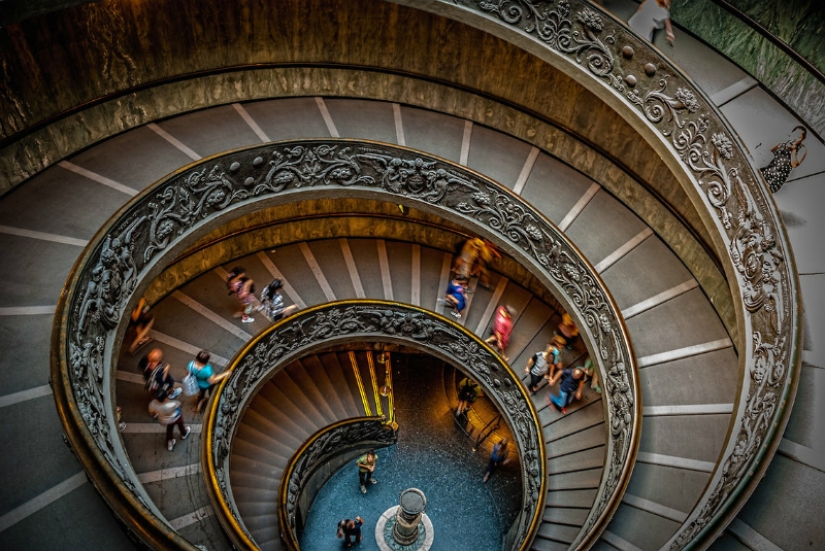 The total length of the overlapping museums complex — 14 miles. They say that if you spend on every instance only a minute of time to get acquainted with all the contents of the museums will take four years.
The total length of the overlapping museums complex — 14 miles. They say that if you spend on every instance only a minute of time to get acquainted with all the contents of the museums will take four years.
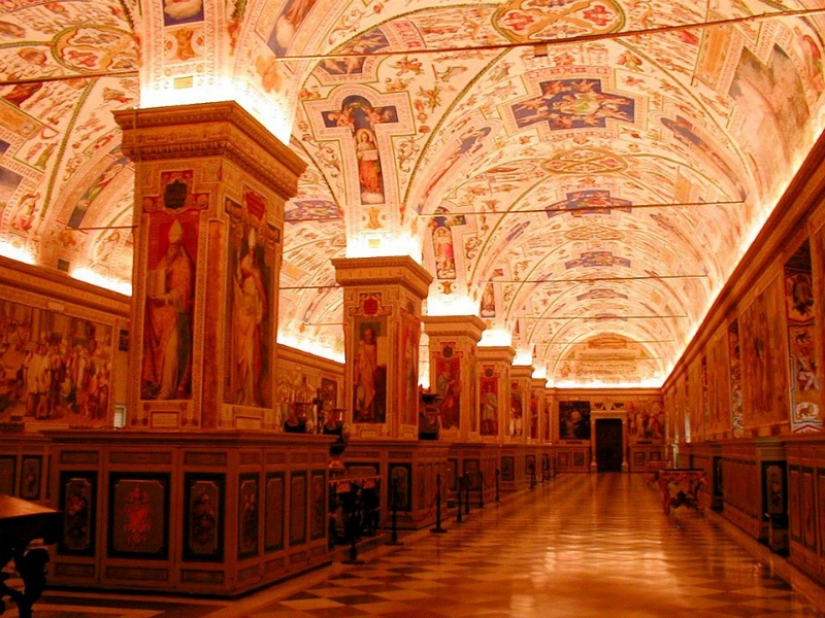 The art galleries of the Museum are literally everywhere, and can be found on the columns and on the steps — on the ceilings and walls.
The art galleries of the Museum are literally everywhere, and can be found on the columns and on the steps — on the ceilings and walls.
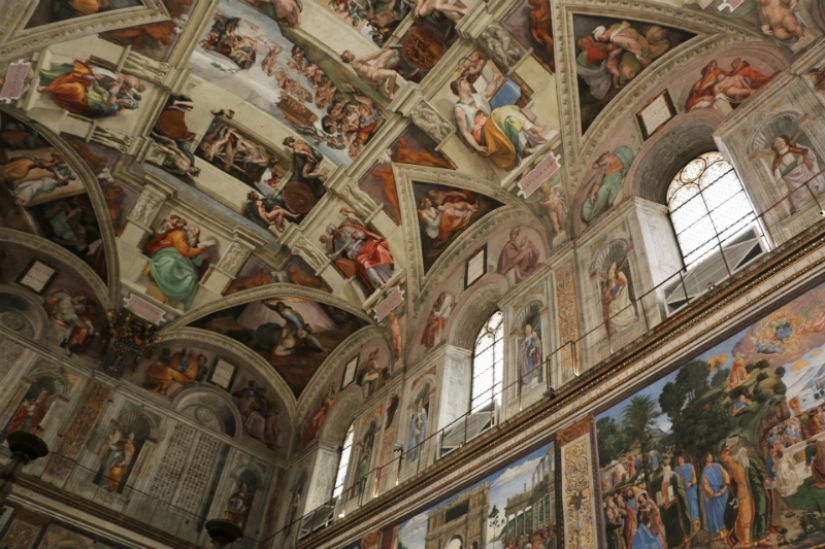 Pearl of the Museum — the Sistine chapel, the chapel where Michelangelo and other artists of the Renaissance worked for 60 years to hone their works. Because of the large concentration of tourists in the chapel of the security service periodically asks the audience to whisper at this point.
Pearl of the Museum — the Sistine chapel, the chapel where Michelangelo and other artists of the Renaissance worked for 60 years to hone their works. Because of the large concentration of tourists in the chapel of the security service periodically asks the audience to whisper at this point.
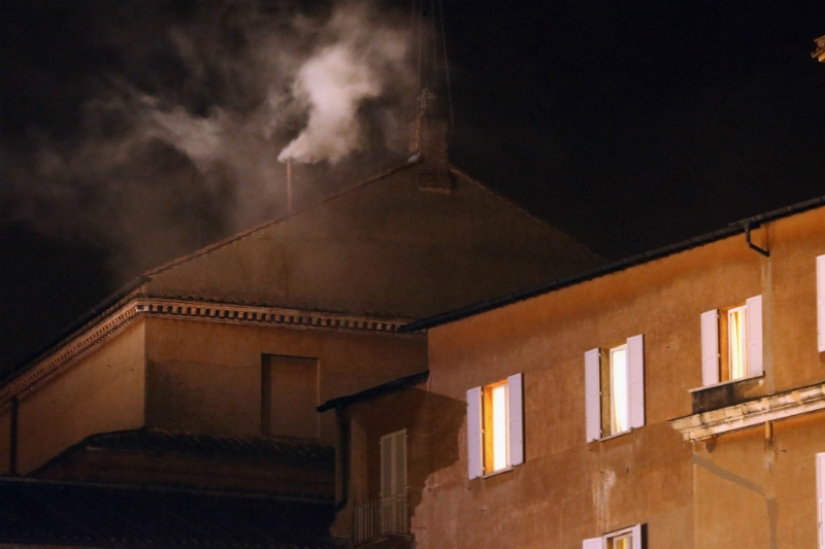 By the way, the Sistine chapel — home of the Conclave where cardinals gather to vote on the election of the next Pope. When the decision has finally been made, from the chimney on the roof of the chapel allowed the white smoke.
By the way, the Sistine chapel — home of the Conclave where cardinals gather to vote on the election of the next Pope. When the decision has finally been made, from the chimney on the roof of the chapel allowed the white smoke.
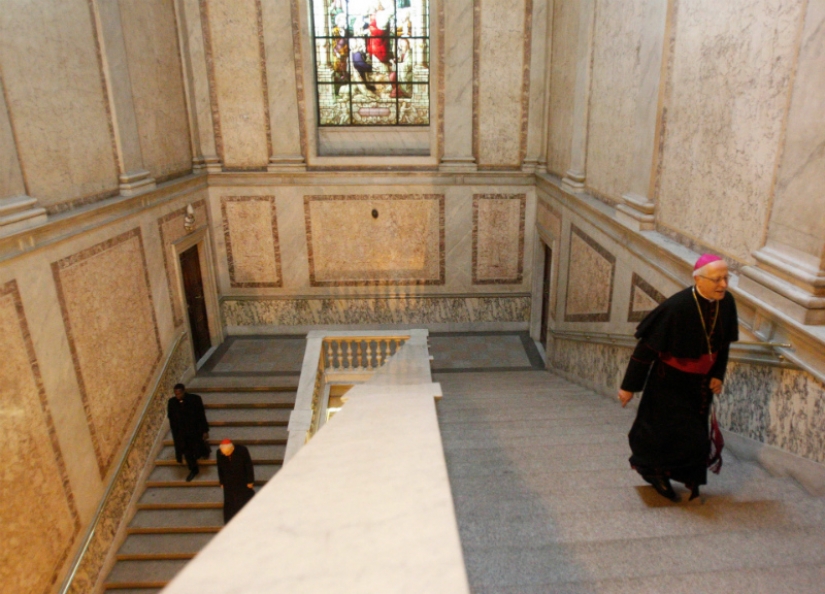 Next door is the chapel of the Apostolic Palace, originally built for the residence of Pope Sixtus V and then periodically used by popes for living and entertaining. Such is the White house in the Vatican.
Next door is the chapel of the Apostolic Palace, originally built for the residence of Pope Sixtus V and then periodically used by popes for living and entertaining. Such is the White house in the Vatican.
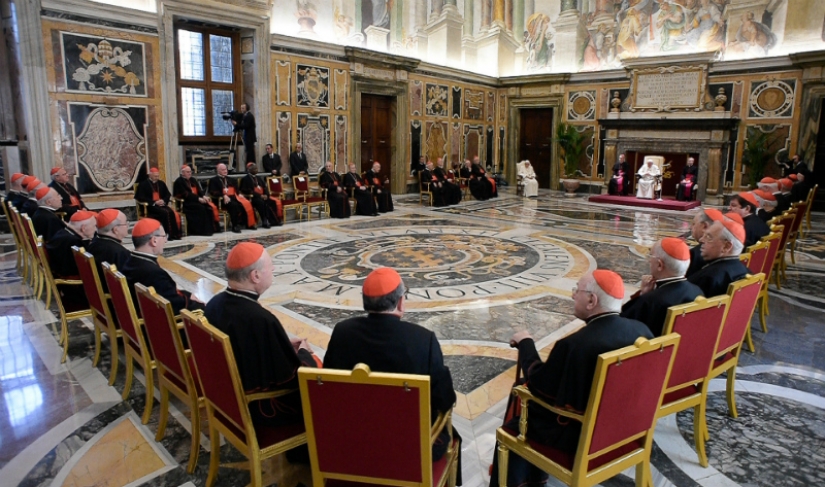 That's how the Palace looks from the inside.
That's how the Palace looks from the inside.
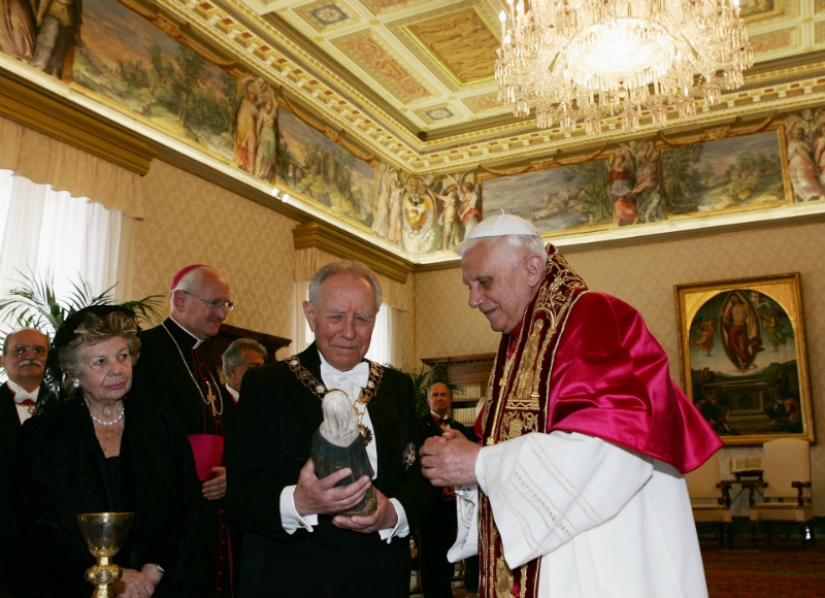 Ornate Apostolic library is a popular place dads for the reception of foreign guests.
Ornate Apostolic library is a popular place dads for the reception of foreign guests.
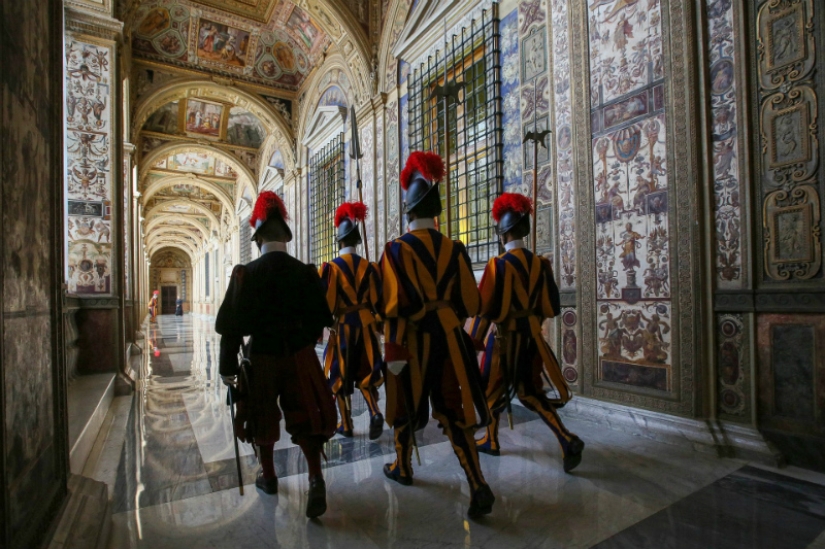 Guarding the Apostolic Palace — and one should think of the entire Vatican city is the smallest army in the world composed of the four soldiers. Such is the small Swiss guard traditionally employed by the Holy see since 1506, but in order to get into it, you must be a bachelor, a porter by nationality and Catholic in age from 19 to 30 years.
Guarding the Apostolic Palace — and one should think of the entire Vatican city is the smallest army in the world composed of the four soldiers. Such is the small Swiss guard traditionally employed by the Holy see since 1506, but in order to get into it, you must be a bachelor, a porter by nationality and Catholic in age from 19 to 30 years.
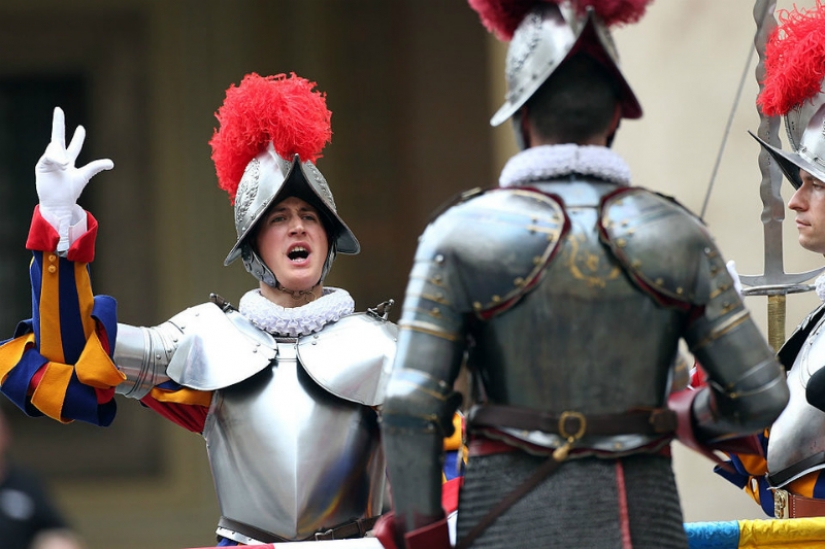 In fact, there is a lot of security activity takes the so-called papal gendarmerie, but officially it is not an army. Interesting fact: the percentage of the Vatican — the most militarized country in the world, because 101 of 557 of its citizens formally in the armed forces. In second place is North Korea.
In fact, there is a lot of security activity takes the so-called papal gendarmerie, but officially it is not an army. Interesting fact: the percentage of the Vatican — the most militarized country in the world, because 101 of 557 of its citizens formally in the armed forces. In second place is North Korea.
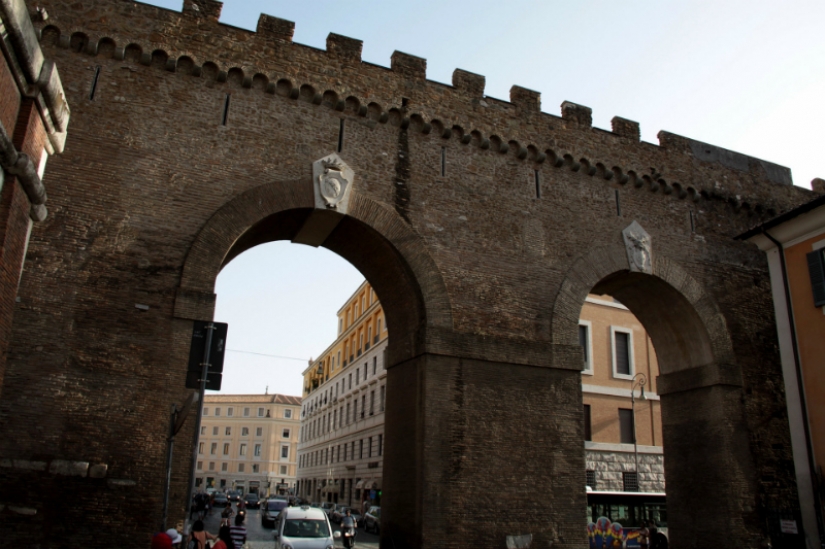 The army was not always possible to keep the head of the Church in security several times in history, popes escaped through the so-called Passetto, a fortified corridor with a length of about 800 meters that connects the Vatican with Castel Sant'angelo. Last time they were used by Pope Clement VII, after the Vatican in 1527 captured troops of Emperor Charles V, killing all the members of the Swiss guard on the steps of the Basilica.
The army was not always possible to keep the head of the Church in security several times in history, popes escaped through the so-called Passetto, a fortified corridor with a length of about 800 meters that connects the Vatican with Castel Sant'angelo. Last time they were used by Pope Clement VII, after the Vatican in 1527 captured troops of Emperor Charles V, killing all the members of the Swiss guard on the steps of the Basilica.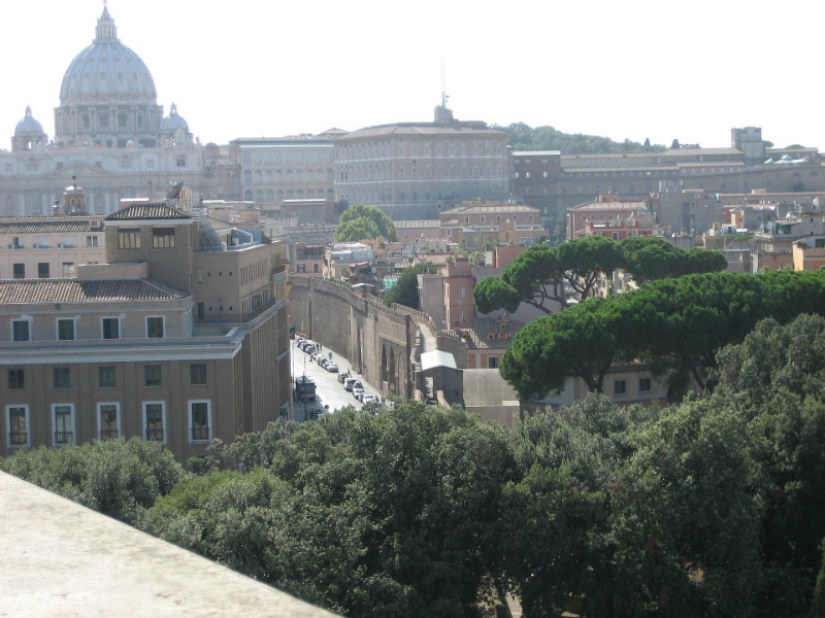 A view of the Passetto from the Castel Sant'angelo.
A view of the Passetto from the Castel Sant'angelo.
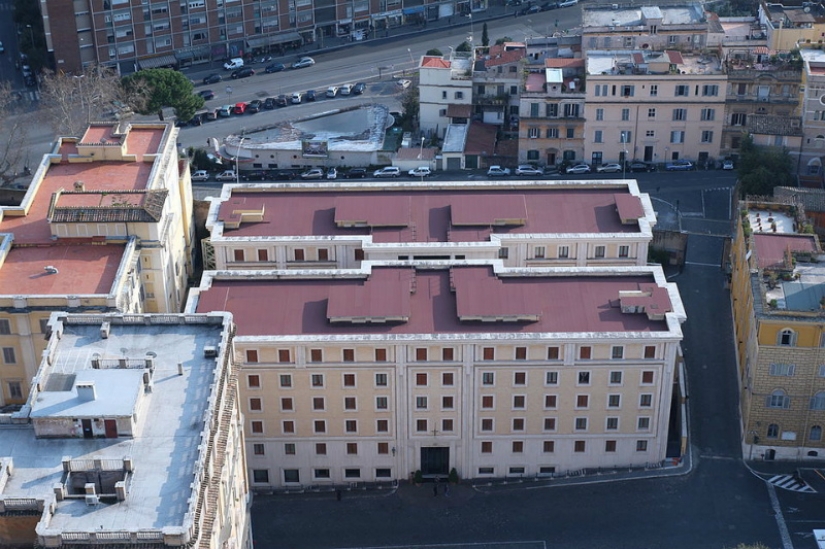 By the way, Pope Francis, in a break with tradition, refused to stay in the Apostolic Palace and instead spend the night in a modest guest house.
By the way, Pope Francis, in a break with tradition, refused to stay in the Apostolic Palace and instead spend the night in a modest guest house.
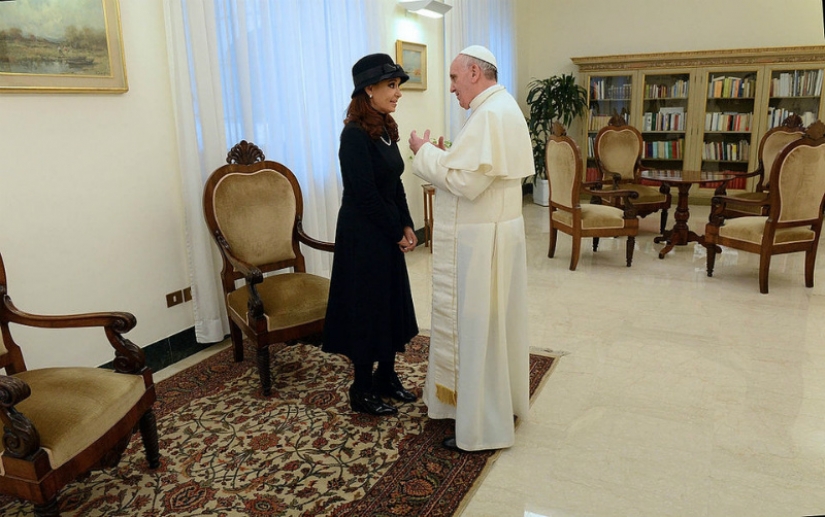 Unlike the Apostolic Palace, the guest house is not as pretentious and more intimate. In the photo Pope Francis during the reception of the President of Argentina Cristina Fernandez de Kirchner.
Unlike the Apostolic Palace, the guest house is not as pretentious and more intimate. In the photo Pope Francis during the reception of the President of Argentina Cristina Fernandez de Kirchner.
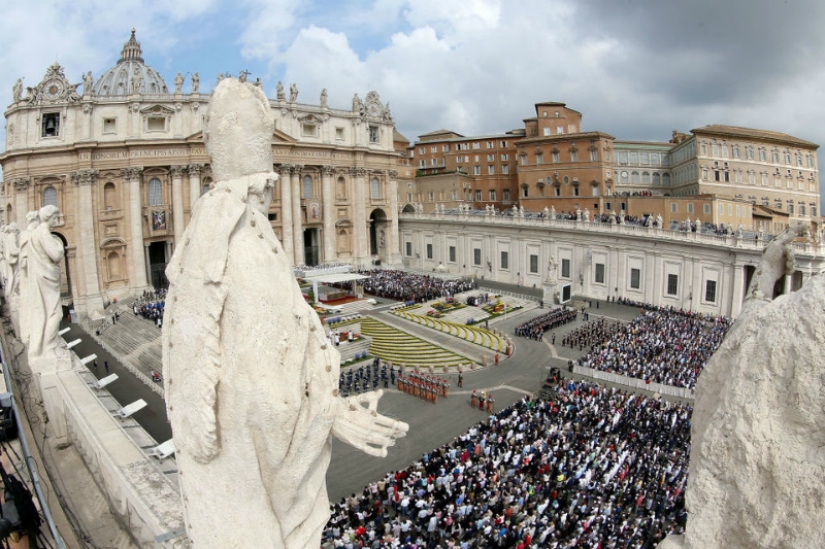 The view on the approach to the Basilica.
The view on the approach to the Basilica.
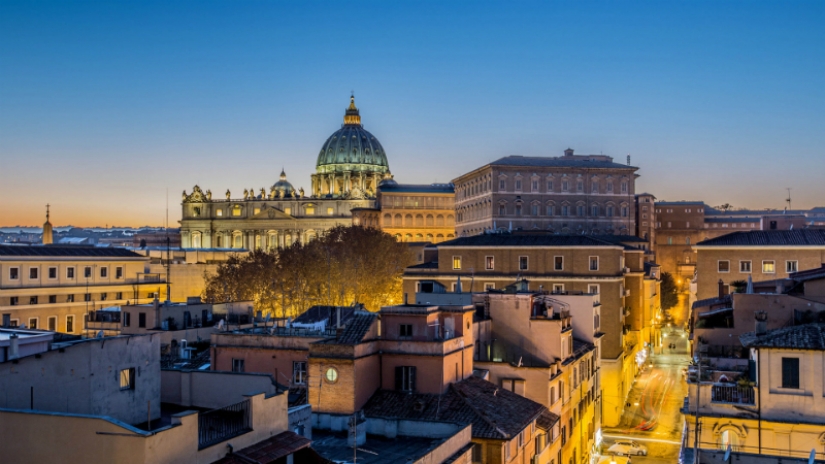 Popes come and go, but the Vatican, which they call home, will be a long time to decorate the types of the Eternal city.
Popes come and go, but the Vatican, which they call home, will be a long time to decorate the types of the Eternal city.
Keywords: The Vatican | Italy | Catholic | Catholicism | Museums | The Pope | Residence | Rome | Gardens | Shrines
Post News ArticleRecent articles

Sandy beaches grey, brown or even white shade is quite usual for us. Even rocky beaches with sharp cliffs that attract the bravest ...

What if you don't want to bother, but wishes to earn $ 300 million? A bit of options and the best of them found the two lover ...
Related articles

Italian actress Ornella Muti started acting at the age of 14 and became famous with roles in movies. All my life she was surrounded ...

Sensual beauty of Italian Actresses of the Golden age of the movie is a celebration of femininity and naturalness. Italy generally ...

This series of photos of Sophia Loren and her husband Carlo Ponti at their villa was taken by photographer Alfred Eisenstadt in ...

A good imagination and ability to think creatively is, of course, fine. But even here it is necessary to know the measure! And two ...